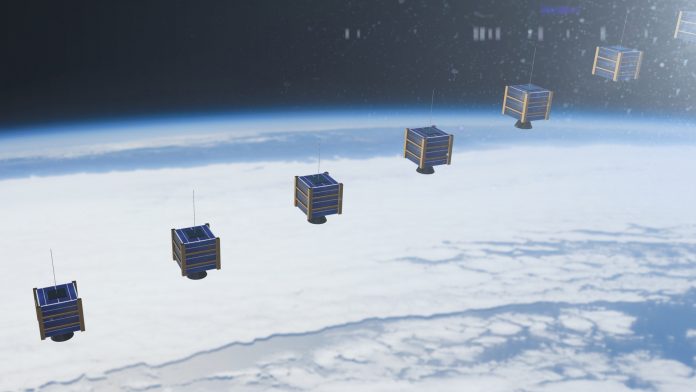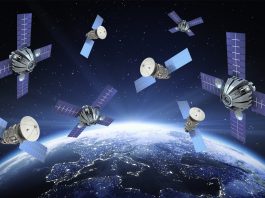The Innovation Platform speaks to Dr David Carroll, President of Champaign-Urbana Aerospace, about the latest innovations in micropropulsion systems for nanosatellites.
Founded in 1998, Champaign-Urbana Aerospace (CUA) is a 22-year old small business concern with offices and laboratories located in Champaign, IL, a few minutes from the University of Illinois at Urbana-Champaign (UIUC) campus. CUA owns a 10,000 sq. ft. mixed-use office/lab building. The company has several different areas of technical specialisation, including space systems (hardware and software), high performance software solutions, advanced aerospace materials, plasmadynamic systems, and high energy lasers. This diversification provides the company with a basis of broad multidisciplinary knowledge and the ability to rapidly advance new technologies and solutions for a wide variety of sophisticated problems.
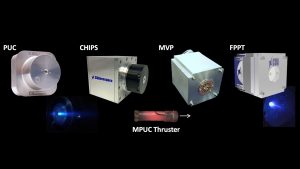
Spacecraft propulsion technologies
CUA has developed five innovative micropropulsion systems that represent tipping point technologies for future integration and flight on micro/nanosatellites. This family of systems provides a broad range of capabilities from high thrust to high specific impulse to best suit the needs of the customer.
The Propulsion Unit for CubeSats (PUC) utilises a micro-plasma discharge thruster for a highly compact warm gas system that can fit in a 0.35-litre package. The CubeSat High-Impulse Propulsion System (CHIPS) utilises a micro-resistojet warm-gas thruster combined with attitude control thrusters to provide a versatile three axis, one litre (1U) package. The PUC and CHIPS technologies both use self-pressurising liquids as their propellant, which requires a pressure vessel and microvalving.
To eliminate any range safety concerns and dramatically lower system cost, CUA has now developed two polymer-based fibre propellant systems in which the fibre is stored and fed from a simple spool. The Monofilament Vaporisation Propulsion (MVP) system uses 3D printing technologies to feed and melt the fibre followed by the use of the CHIPS micro-resistojet to vaporise the melted fibre and produce thrust. The Fibre-fed Pulsed Plasma Thruster (FPPT) takes advantage of modern electronics technologies to enable the packaging of a rugged 20-joule capacitor bank, fibre-spool, and electronics into a 1U volume that enables a 20-kilamp pulsed discharge producing thrust with a high specific impulse more than 2000s. CUA believes that these high performance, low cost polymer-based thruster systems will have broad commercial appeal and our goal is to be able to deliver 100 or more per year in the future.
The fifth in-space propulsion technology that CUA is developing is a high thrust option using an ethanol and hydrogen peroxide monopropellant mixture. This monopropellant, designated CMP-X, is a non-detonable yet energetic COTS formulation that possesses many system-level advantages including lower cost, lower thermal load (approximately 950°C flame temperature), water-like viscosity, and common materials compatibility. CMP-X is designed as a monopropellant option for customers who can accept a modest performance trade-off for the advantages of lower cost, easy transportability, considerably fewer range safety concerns, longer continuous thrust burns, and lower flame temperature resulting in considerably less thermal soakback into the spacecraft.
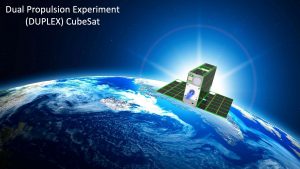
CUA is the recipient of one of 2019’s 14 NASA Tipping Point partnership awards for the design, fabrication, launch and in-space demonstration of the Dual Propulsion Experiment (DUPLEX) CubeSat. DUPLEX is a 6U CubeSat that will test two of CUA’s micropropulsion technologies in space to provide flight heritage for these innovative new FPPT and MVP thruster systems. This flight demonstration will significantly lower risk for future customers, thereby increasing commercialisation potential and dramatically raising the Technology Readiness Level (TRL). Through the NASA STMD investment, DUPLEX is fully funded from design to launch. Delivery of the DUPLEX spacecraft to team partner Nanoracks is anticipated in early 2022 and tentatively scheduled for launch mid-2022.
The company has also pioneered rotating solar sail concepts involving hub and tip satellites for centrifugal stability and control. The UltraSail technology is designed for interplanetary missions and the I-Sail variant for near-Earth missions. The CUA-UIUC built CubeSail satellite was launched in late 2018 with mission operations scheduled to begin in late 2020. A more recent CubeSail-D concept is designed as a deorbiting technology for nano to small satellites that have altitudes lower than 5000km.
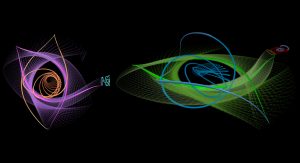
GRASP
The Guideless Resilient Androgynous Serial Port (GRASP) mechanism provides an androgynous mechanical and electrical interface that can be tailored to meet the requirements of a given application. Developed for modular spacecraft assembly, though extendable to ground-based robotic systems, each assembly mechanism is equipped with physical connections (spring pins) for both power and data transmission between the different modules. The GRASP technology meets the requirements of symmetric androgyny that other international efforts are not currently meeting.
Spacecraft Software Technologies
CUA also has the capability to plan and analyse space missions. Space systems for defence, commercial, and civilian applications are undergoing massive reconfiguration. The utilisation of space by the military, NASA, and commercial space applications, primarily in communications, are on the verge of enormous growth. The need for new, highly efficient space systems will increase somewhat over the next several years, leading to more satellite systems and constellations in a variety of orbital altitudes.
The Dynamically Leveraged Automated (N) Multibody (DyLAN) Trajectory Optimisation tool is an automated global trajectory optimisation software for rapid preliminary mission design of impulsive/low-thrust multibody missions. DyLAN merges state-of-the-art automated global optimisation algorithms with dynamical systems techniques to provide engineers with an automated tool that can provide multi-objective solution sets, enabling new design concepts and tractable solutions for currently ‘unsolvable’ problems. DyLAN harnesses parallel processing for quick execution, solves at medium-high fidelity and will provide native export to NASA GMAT for a quick transition to flight fidelity solutions.
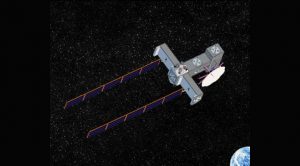
CUA’s sister optimisation tools NLPAROPT and COMPNOT, for distributed and shared memory computer architectures respectively, are parallelised non-linear programming (NLP) optimisation solvers that eliminate the bottleneck of existing serial execution NLP solvers.
Furthermore, CUA is preparing a mid-2020 release of its SEPTER software tool for the optimised design of modular spacecraft architectures. This tool includes a graphic user interface allowing the user to choose different spacecraft module components that then utilises genetic algorithm (GA) approaches to determine optimal configurations for the modular spacecraft based on mission requirements.
Dr David Carroll
President
CU Aerospace, L.L.C.
+1 217 239 1703
carroll@cuaerospace.com
www.cuaerospace.com
Please note, this article will also appear in the second edition of our new quarterly publication.

